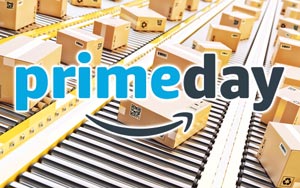 Amazon Prime Day is rapidly approaching, and with all the lockdown madness happening for the last few months, retailers are looking for more creative ways to sell their products online. Normally, Prime Day would be the perfect opportunity to create some deals and make extra cash, but with Amazon’s increasing seller fees and competition, it might not be the best investment.
Amazon Prime Day is rapidly approaching, and with all the lockdown madness happening for the last few months, retailers are looking for more creative ways to sell their products online. Normally, Prime Day would be the perfect opportunity to create some deals and make extra cash, but with Amazon’s increasing seller fees and competition, it might not be the best investment.
What’s All the Hype?
Amazon Prime Day is one of the most talked about sales events of the year. The 2019 event was a huge success. Prime users were extremely positive on social media in the days building up to Prime Day, and sales and membership sign ups went through the roof. According to Amazon, Prime Day garnered more membership sign ups than any other day of the year and sold more units than the biggest Black Friday sales on record.
The official Amazon Prime Day 2020 date in the US remains a mystery, but all signs point to the deals marathon being postponed to August rather taking place in mid-July, according to Tech Radar. The good news is that Prime Day is still happening, so resellers already on the site can take advantage of this sales event, but for those who don’t already sell on Amazon, is it worth all the hype?
The Drawbacks of Prime Day
Even though Prime Day is one of the most talked about sales events of the year, many consumers who shopped on Prime Day ended up complaining on social media using the #PrimeDayFail hashtag. There were many technical issues, out-of-stock merchandise, or deals on unnecessary items that no one really uses.
Another factor to consider are the listing prices. According to a Sellics Prime Day Guide, the sales event was free for sellers for the first two years, but in 2017, Amazon introduced a registration fee of $500 per Lightning Deal. The intimidating cost of Prime Day can dishearten sellers who are just trying it for the first time and worry about how many sales they will make. The reality is, so many companies list their products on Amazon, that unless brands are paying top dollars for advertising, their listing will get lost among the hundreds of pages of similar items.
Make Your Own “Prime Day”
Amazon isn’t the only dealer offering their own sales event. Last year, Walmart conducted their own “Google Week,” which ran from July 8 to July 16 and included limited-time deals on Google products. Target, Macy’s and eBay also took note of Amazon’s Prime Day success and offered their own mid-July deals in an effort to lure online shoppers.
Consumers almost expect retailers to serve their own types of deals and discounts around Prime Day, since the likes of Walmart, Target, Best Buy, and other retail conglomerates have created their own “Prime Day’s” to compete with Amazon. Analysts are even starting to refer to this time as “Black Friday in July” because of all the deals going on.
How to Do Things Right
No matter what, retailers will have obstacles when holding any sort of sales event. As mentioned above, some consumers were really upset with Prime Day and even created their own hashtag fail on Twitter, but the event still sold more units than on the biggest Black Friday sales event, which speaks volumes for how Amazon is handling things.
What Amazon did well was provide their Prime Member loyalty customers with an exclusive sales event, since the only way to gain access to Prime Day is by having an Amazon Prime account. One way to get customers to sign up for your loyalty program is by giving them special offers and engaging with them through fun events, such as Prime Day.
Retailers should also plan on different marketing tactics. Prime Day didn’t get to where it is today with just one social media post. Just as any brand would market for Black Friday, the same effort should be put into a special sales event, especially since your customers wouldn’t expect it coming like they would Black Friday. By making your loyalty member customers feel special and utilizing the right marketing tactics, your brand’s own “Prime Day” could be very successful.